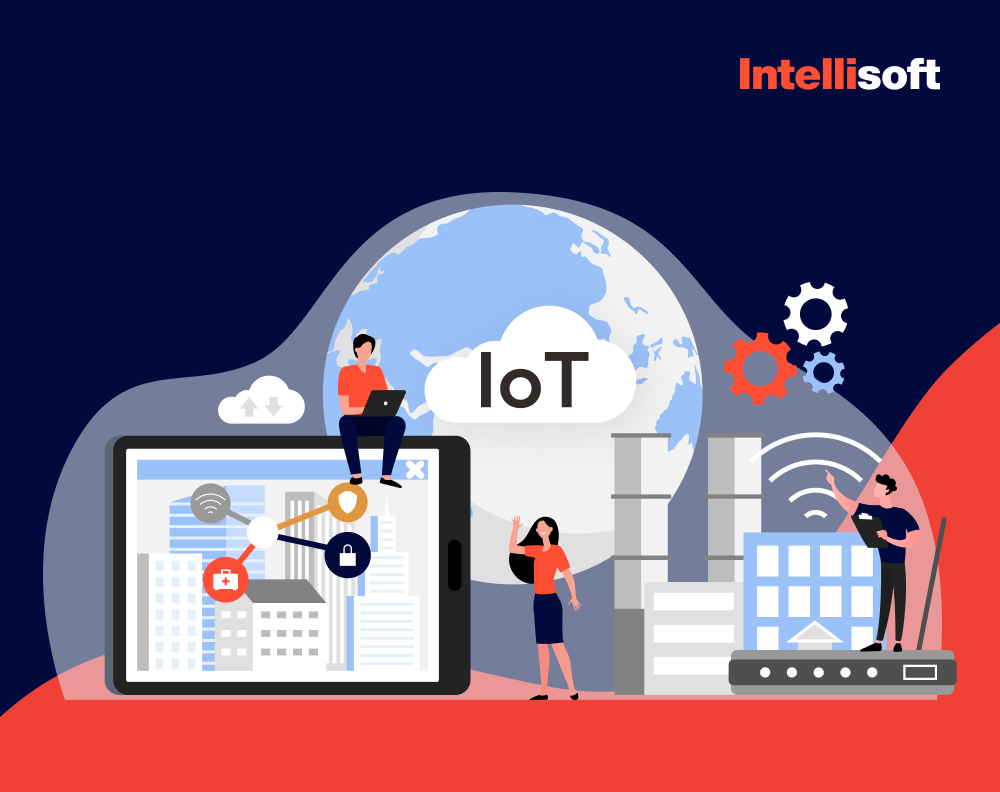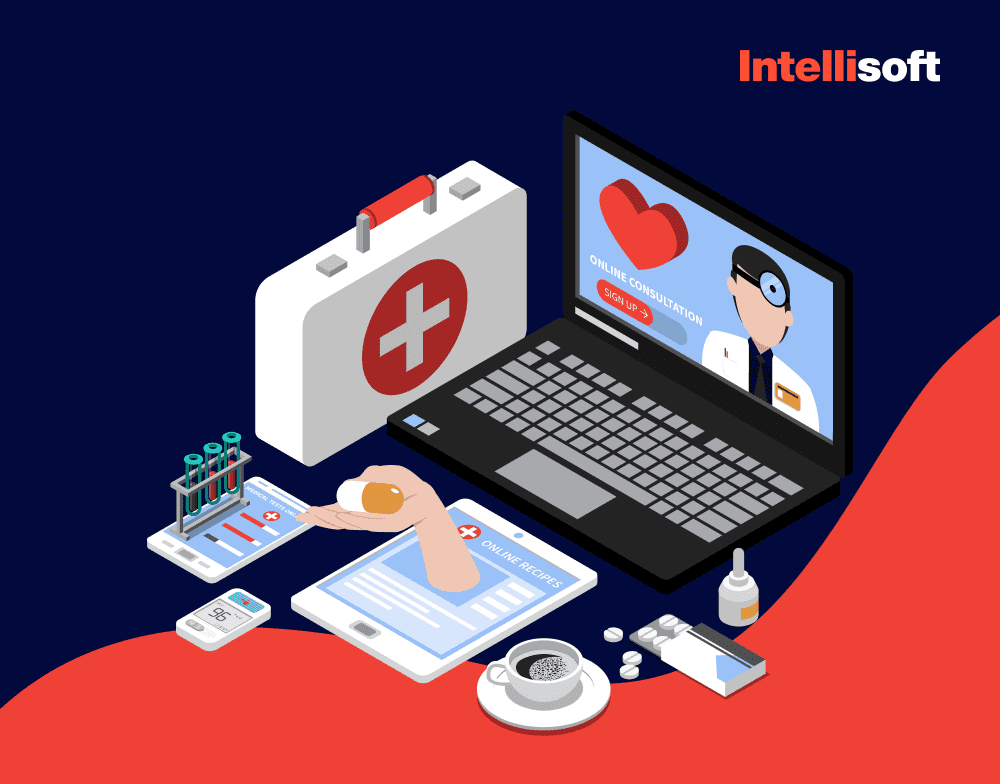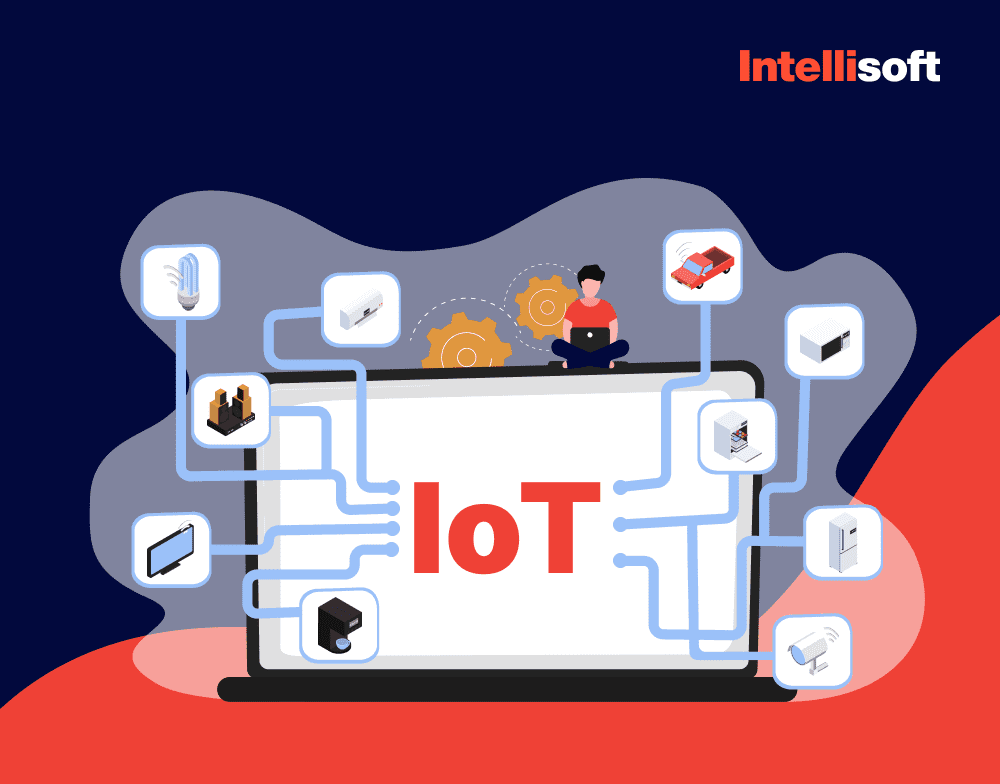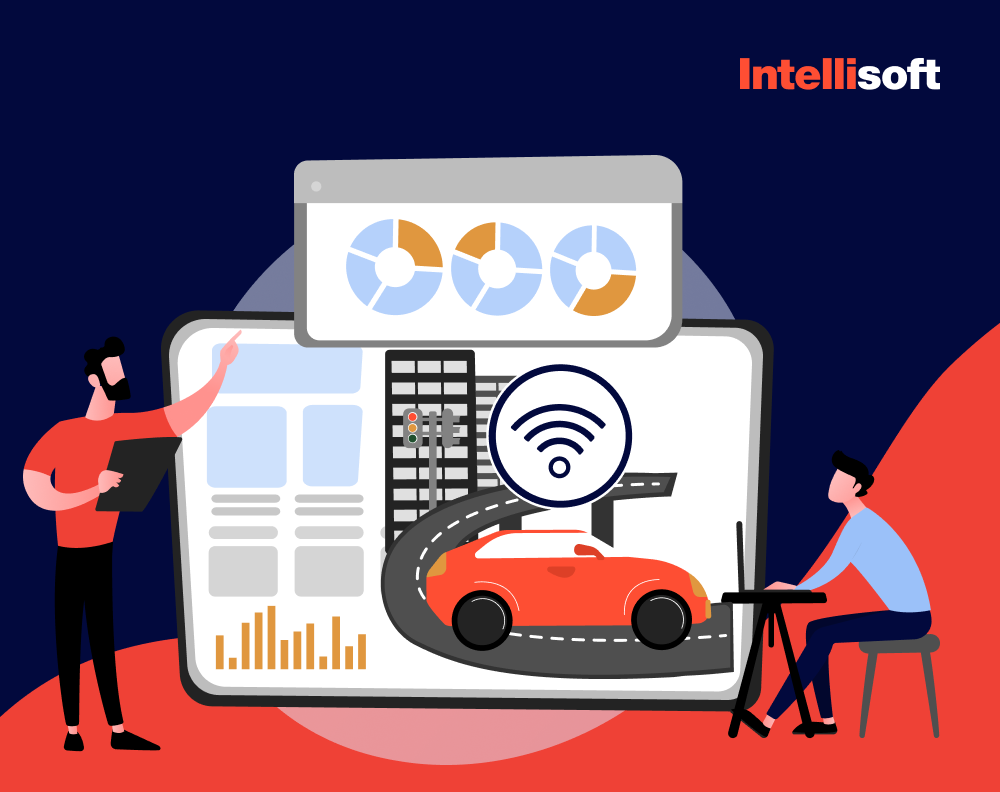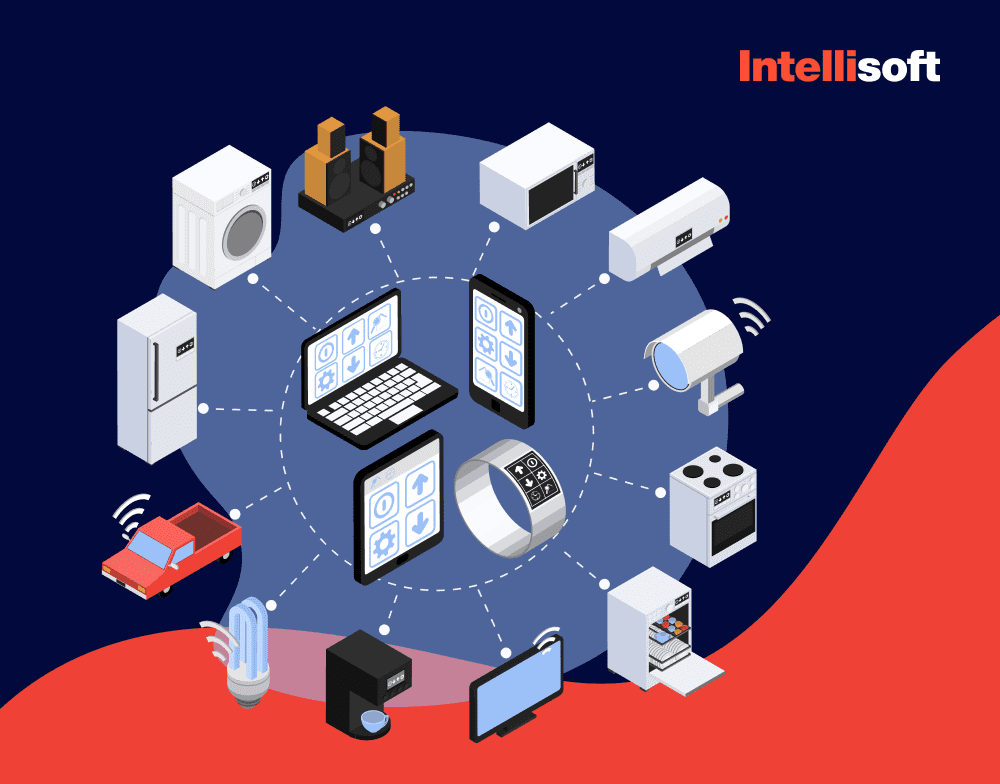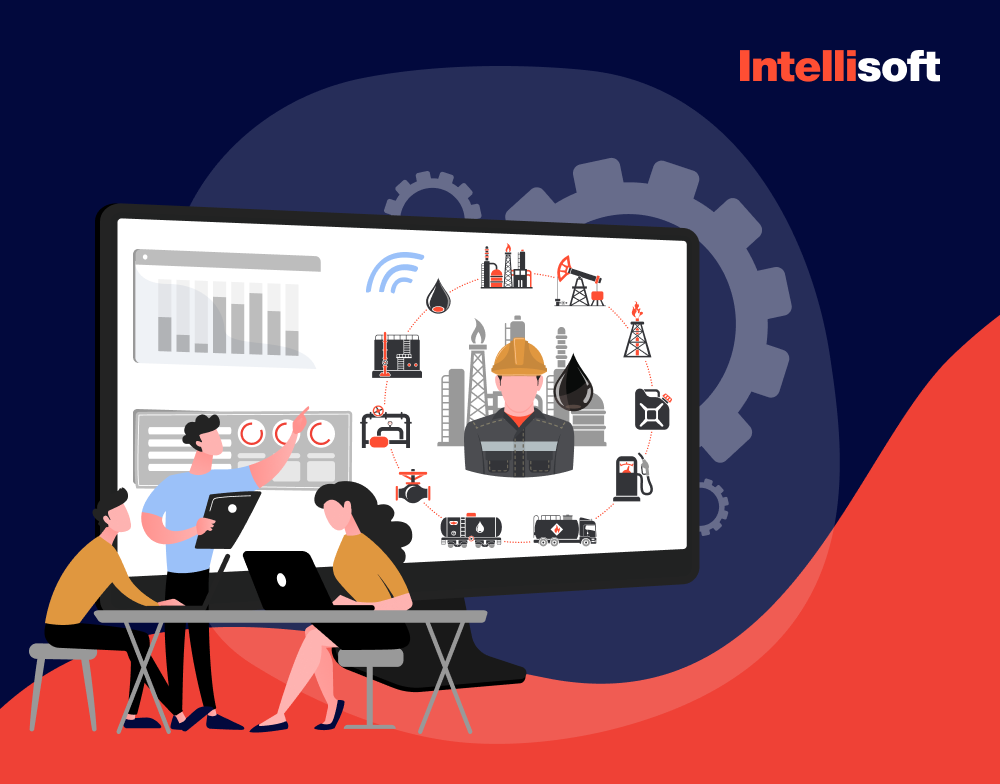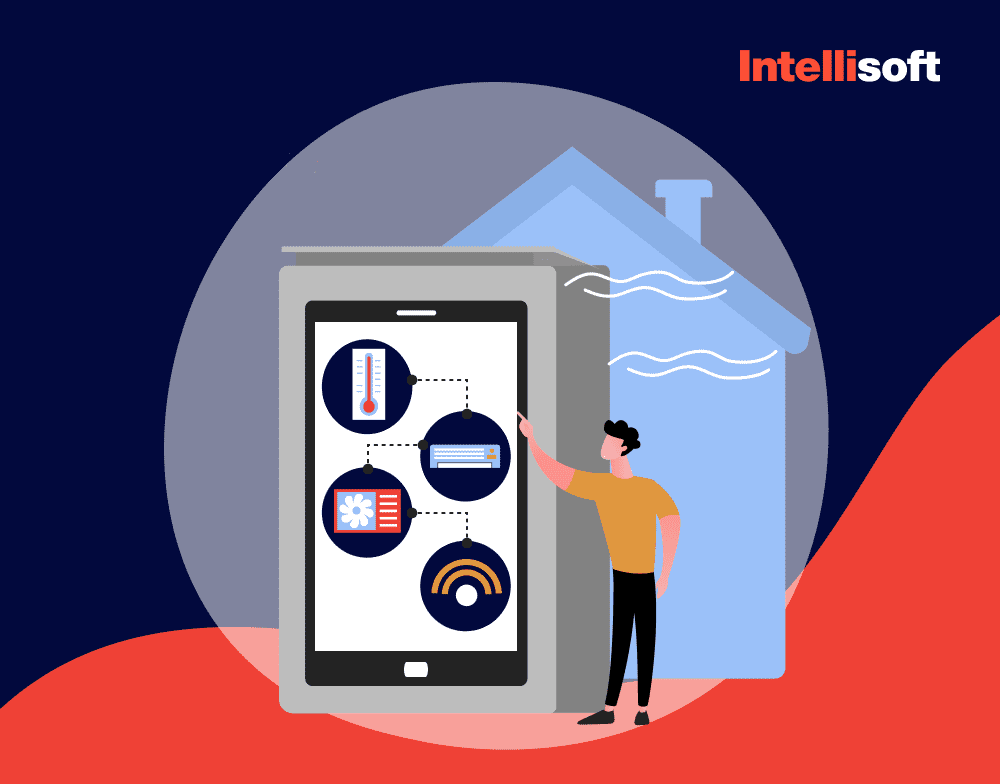Large companies today can develop Internet of Things (IoT) solutions that connect things, collect data, and extract knowledge. The number of connected IoT devices increased by 18% to 14.4 billion globally in 2022, while 27 billion are expected by 2025.
Almost all industries are using the Internet of Things, and it has dramatically changed the customer experience. In the automotive industry, through collaboration with areas such as artificial intelligence (AI), data analytics, and cloud technology, autonomous driving has allowed drivers to relax like passengers. That’s just one example.
As far as the IoT can be the deciding factor between life and death, testing corresponding solutions has never been more important. The IoT produces a lot of data in huge volumes, and herein lies the first biggest challenge. Add external factors such as heterogeneous environments and the complexity of a number of components. Large-scale IoT systems and connected devices also make it difficult for enterprises to develop, deploy, integrate, and scale apps.
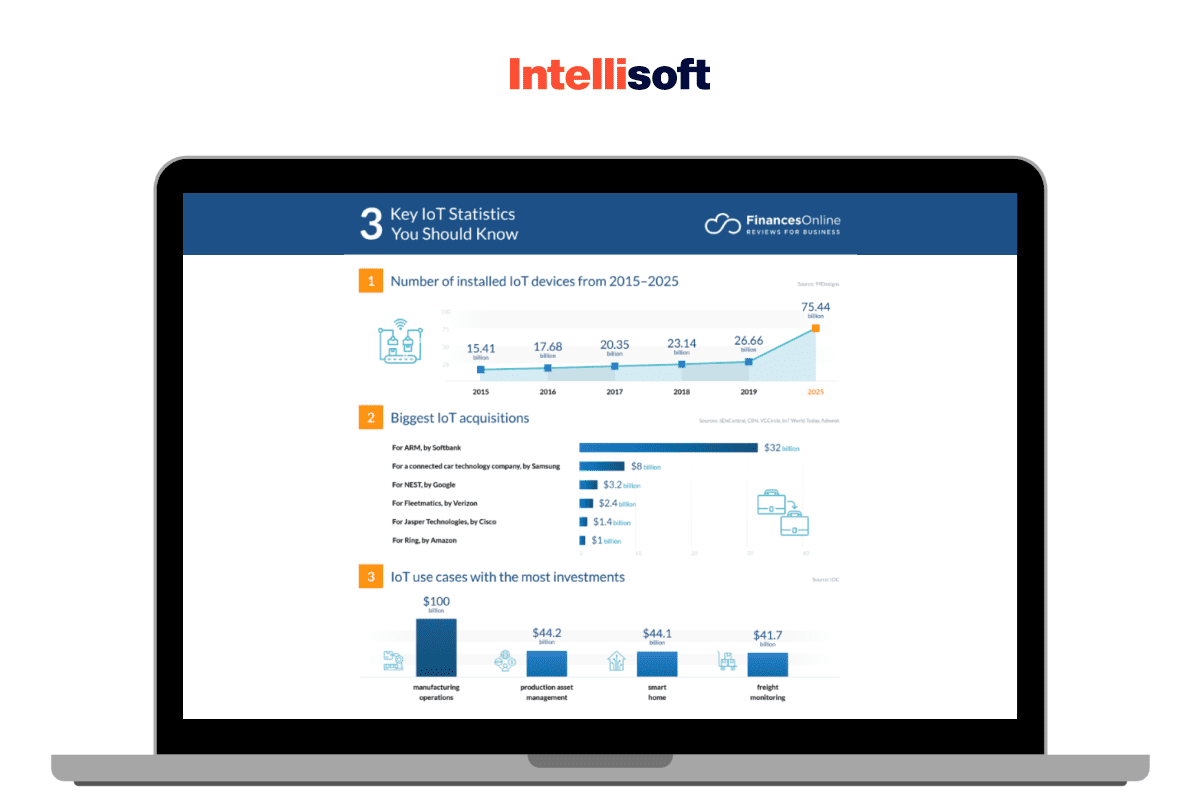
We at IntelliSoft have also faced the need to conduct IoT testing for our clients. We have also assisted with creating several Internet of Things solutions. One example is the case of a well-known Swiss manufacturer of industrial heating systems who asked us to lend a helping hand with the control and monitoring of remote heating systems through the use of IoT devices. In addition to the unique enterprise resource planning (ERP), we provided them with a dedicated crew of engineers.
So, why does software for the Internet of Things testing matter? How should you conduct it safely? Read our new post.
Table of Contents
What Is IoT Device Testing?
The operation’s verification, safety, and performance of hardware/software in an Internet of Things system are supported by a collection of procedures known as IoT device testing. Performance, dependability, and a quick time to market (TTM) are all guaranteed by testing IoT solutions across the entire product life cycle.
In other words, testing IoT devices allows us to determine whether the Internet of Things software and devices satisfy established quality standards and work as expected. That is done to prevent bugs and severe failures.
How would you test a smart fridge, a smart garage, or other types of IoT devices? Another question is, why would anyone do that? Look at the advantages you get below.
How Can You Benefit from the Internet of Things Testing?
Today, Samsung, Cisco, and Intel are some of the biggest IoT players. They would not if they did not see all the benefits. Basically, here are several reasons to consider the Internet of Things audit:
- Accelerated time-to-market. IoT testing accelerates TTM by utilizing early automation.
- Improved interoperability. IoT quality assurance (QA) testing guarantees end users have a consistent user experience across numerous channels.
- New growth opportunities. Testing Internet of Things software will accelerate initiatives while reducing risks and driving innovations.
- Increased return on investment (ROI). An IoT test offers a complete strategy for testing IoT systems’ practical and non-functional needs. Consequently, you will provide safer solutions and become more appealing to your clients.
Why Does the IoT Test Matter?
The IoT Testing market was valued at USD 1107.2 billion in 2020 and is expected to reach USD 6042.45 billion by 2026.
People couldn’t have imagined that controlling ordinary things could be so simple a few decades ago. We can monitor our health from the comfort of our homes, find the best mode of transportation, remotely control the vacuum cleaner, and much more. Those things we’re already familiar with make our lives so much easier, right? To understand why checking the Internet of Things devices and systems is significant, let’s recall several use cases:
- RFID (Radio Frequency Identification) and EPC (Electronic Product Code).
- NFC (Near Field Communication), a two-way communication technology mostly utilized for contactless transactions.
- Bluetooth, used when brief communications are sufficient to avoid difficulties.
- Z-Wave, a type of low-frequency radio communication generally used for home automation, lamp control, and other similar purposes.
- WiFi, the most widely utilized Internet of Things technology that facilitates the transmission of info.
You probably would agree that you cannot imagine your life without at least some of these things. To make them function properly, auditing them is a must. The Internet of Things examination guarantees that every system executes its purpose correctly.
Types of IoT Testing
Any break in the Internet of Things can lead to severe, even fatal, consequences. Several types of IoT tests are known. The more you carry out – the more accurate results you obtain.
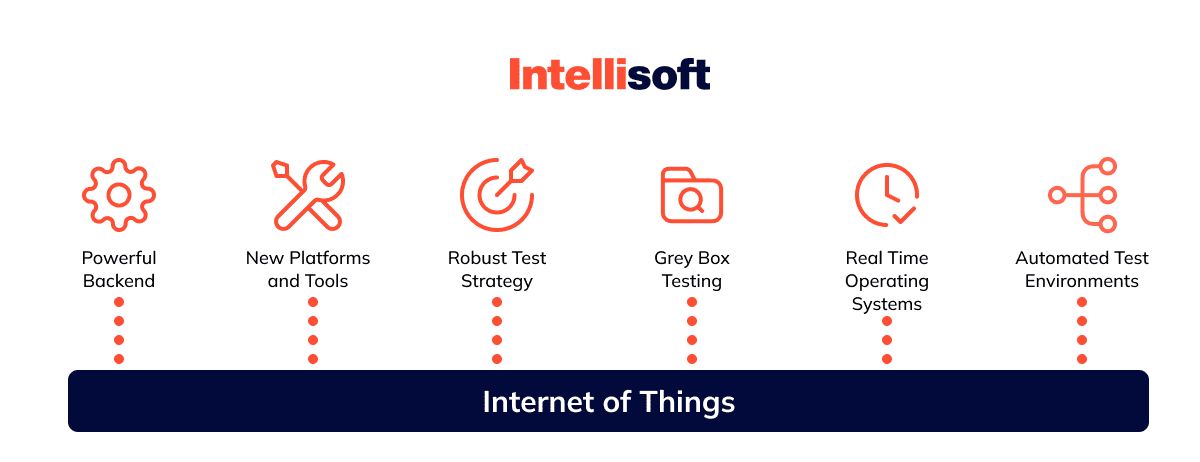
Functional Testing
Every Internet of Things device has a specific function based on the user’s problems. These functions are essential for an app to work effectively. To avoid issues, you must analyze these IoT devices individually and in combination.
Performance Testing
We undertake performance testing on IoT devices to eliminate performance blocks or flaws.
Even a minor glitch in the system can frustrate the customer, and they will stop using the IoT system. It’s possible to measure system performance through a variety of performance metrics, such as:
- Throughput efficiency
- Database performance
- Load tolerance & speed
- Uptime
- Data transfer rate
Connectivity Testing
One of the essential components of an IoT system is connectivity. IoT device testing investigates the dependability of communication between devices, apps, and users. As a result, it is critical to check the device’s network connection. Furthermore, ensure that the device successfully supplies the required and relevant data after connecting to the system. How does it work offline, by the way?
Regressive Testing
Every time you modify the Internet of Things system, whether by adding a new module/updating an existing device, perform regression testing. If the code or the device changes, the entire system may change. Make sure all components continue to function properly after every upgrade.
Interface Testing
Although the operations are carried out by the device in this case, we must verify the graphical user interface of the IoT system because a graphic app is needed for the user to control the system. This examination matters to determine whether the user interface complies with the criteria and specifications.
Compatibility Testing
Because of the complexity of such systems, compatibility testing is critical in the QA testing process for Internet of Things solutions. Running test cases is required to guarantee that IoT devices work with every user interface (UI), from hardware and OS to software and network performance. After that, assess the app’s functionality across many device generations and browser iterations.
Assume your Internet of Things program includes a parameter for printing pages. Compatibility testing can help you determine whether this software supports fonts, alignment, and page graphics for printing equipment in this scenario.
Integration Testing
After the device unit tests are completed, move on to integration testing. Integrate all of the components and test their interoperability. When the system comprises many devices, it’s critical to understand how each one interacts with the others.
Network Testing
When evaluating Internet of Things systems, consider their capacity to handle various network connections and communication protocols on the IoT platform. Each device follows a specific protocol, such as ZigBee or BACnet. Network examination is critical for IoT systems because such apps cannot function correctly without robust network connectivity.
Module Testing
Here, the developer writes code for a specific IoT system module or device. To ensure that the module, part, or gadget functions appropriately, they must test it. Usually, unit testing is done by the development team.
Security Testing
Conduct IoT security testing to minimize vulnerabilities and safeguard data integrity. This step makes sure that all data being transmitted is encrypted and secure. Does password security prevent harmful assaults? It also involves device authentication and some more checks.
End users have long been concerned about security. Users can use IoT systems for a wide range of purposes, including financial transactions, sharing of private information, buying and selling, and more. That is why it is vital to protect sensitive information.
Reliability Testing
Because different Internet of Things devices and components, particularly sensors, function in varied settings and environments, analyzing the dependability of an IoT system is a good idea. Testing for compatibility and performance is part of this stage.
What Is the IoT Testing Framework and How to Apply It?

The Internet of Things needs a stable testing environment with infrastructure that depends on the IoT ecosystem’s devices. The stages of the IoT Testing Framework are as follows:
- Application layer. At this stage, testing is done for APIs, functionalities, compatibility, usability/user experiences, and localization.
- Service quality layer. Compatibility, functional, and API testing are carried out at this level.
- Network & gateway layer. It’s concerned with network compatibility and IoT connectivity testing.
- Sensory level. The tester will execute functional and security testing at this phase.
Another good question is what we can test regarding the Internet of Things devices and systems.
Components of IoT That We Can Test (On the Example of the Healthcare Industry)
Let’s take the healthcare industry as an example, as IoT is used heavily in this field (with a predicted CAGR of 25.9% during 2022-2028). Consider an IoT medical system that delivers information to healthcare professionals and keeps an eye on a patient’s fluid content, heart rate, and overall health condition. The system displays the data, and archives are accessible. Additionally, doctors make remote medical decisions for their patients. Several approaches to testing the Internet of Things are known.
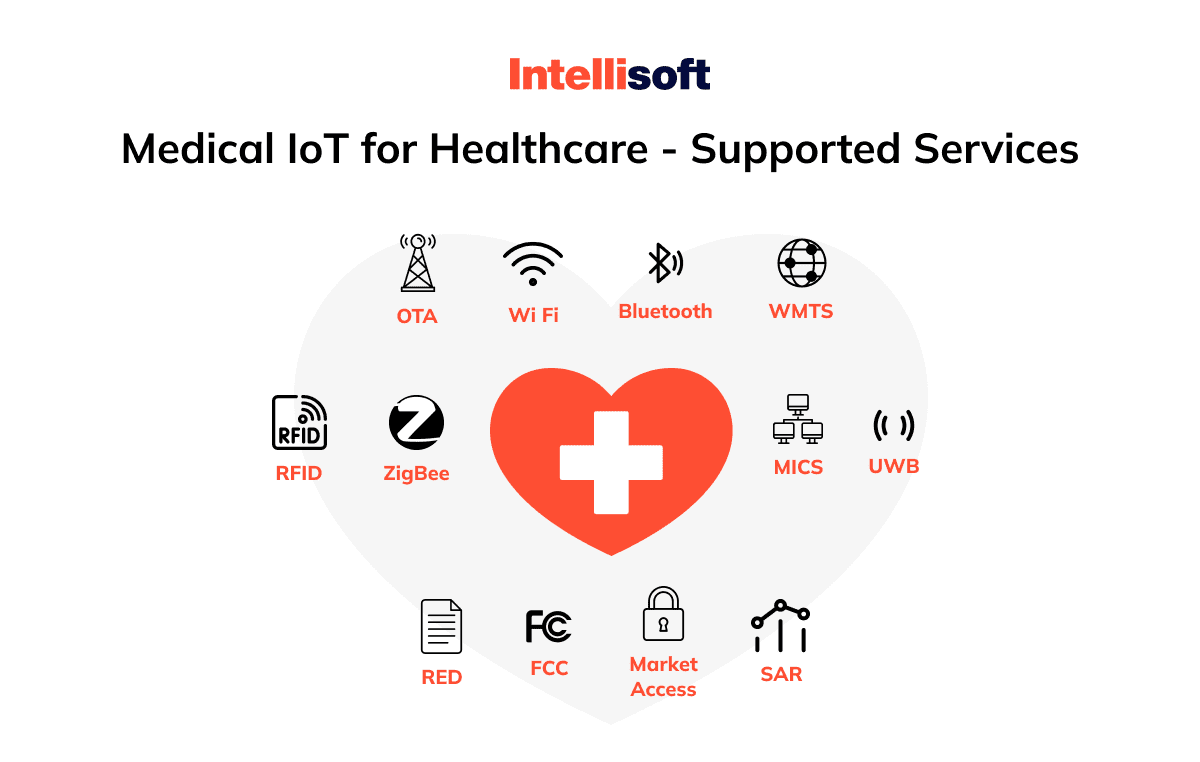
Usability
Make sure to test each device’s usability.
- A medical monitoring gadget should be transportable.
- The system must offer recording occurrences so the user can review them later and better comprehend what happened. If such a choice is absent, the database will be used to store the event data.
- Equipment should be sufficiently advanced to provide error messages, warnings, and other messages along with notifications.
- One should carefully examine whether data processing and task exchange are possible amongst devices.
Compatibility
This item is always included in the testing plan for IoT systems.
For the Internet of Things, compatibility with different operating system (OS) versions, browser types and their corresponding versions, generational differences in devices, and communication technologies like Bluetooth 2.0 and 3.0 are crucial.
Networking capabilities
The IoT’s connectivity and functionality are both crucial. After all, we are discussing a system employed in healthcare provision. There are two key things to look at:
- Access to networks and data transmission capabilities (whether tasks are transferred from one device to another without hitches).
- The situation in which there is no connection. Regardless of the system’s level of dependability, it’s possible for the status to be offline. The hospital staff or another organization must be informed if the network is down via notifications. By doing this, they may keep an eye on the patient’s health without waiting for the system to function. However, these systems frequently incorporate a feature that stores data even while the system is unavailable. Therefore, there is no data loss.
Efficiency
It’s important to consider how well a healthcare solution will work in a particular setting.
- The testing involves 2-10 patients, and data is sent to 10-20 devices.
- 180–200 patients if the entire hospital is wired for networking. As a result, actual data will outnumber test data.
- In addition to everything else, a utility test is required to keep track of the system’s current load, power usage, temperature, etc.
Security
Every connected device relies on data to function. Therefore, it’s impossible to rule out unauthorized access during data transit. To test software, it is important to determine how safe and encrypted the data is. You should see if there is a user interface with a password.
Pilot testing
Pilot testing is an integral component of the test plan.
- Only lab tests will allow you to conclude that the system is operational.
- The number of users is limited during pilot testing. They interact with the app and express their thoughts.
- These remarks prove to be really useful, allowing for creation of a trustworthy program.
Compliance check
Many compliance tests are performed on a system that tracks a health condition.
- It’s also possible for a software product to pass all stages of testing but fail the final compliance test (done by a regulatory agency).
- It makes more sense to test for compliance before beginning the development cycle.
Updates
The Internet of Things is a collection of numerous protocols, devices, OS, firmware, hardware, network layers, etc.
When a system or any other upgrades mentioned above occur, rigorous regression testing is required. To avoid the difficulties of upgrading, changes are made to the overall approach.
Challenges of IoT Testing (Things That Are Hard to Assess)
The Internet of Things might not work equally well for everything. Mind that some elements might be difficult to examine.
- Hardware/Software
The Internet of Things (IoT) is an architecture in which software and physical components are inextricably linked. Not only is the software crucial, but so is the hardware: sensors, gateways, and so on.
Functional testing will not suffice to certify a system. The components are all interconnected. The Internet of Things is far more sophisticated than simpler systems (software or hardware only).
Device interaction model
The network’s constituent elements must interact in real or near-real time. It all turns out as one whole, explaining the additional complications involved with IoT (e.g., security, upgrades, and backward compatibility).
- UI
An IoT network is typically made up of several devices controlled by various platforms (iOS, Android, Windows, and Linux). Testing is only possible on some devices because testing on all available devices is nearly impossible.
- Real-time data
This information is incredibly tough to obtain. The matter is exacerbated by the fact that the system may fall under the purview of healthcare.
- Network availability
The Internet of Things relies heavily on network connectivity. Data transport speeds are improving. IoT architecture must be tested under various connection situations and at various speeds. Virtual network simulators are primarily applied to diverse network loads, connection, stability, and other load testing factors. However, the actual data is always new, and the testing team has no idea where future problems may arise.
- Security vulnerabilities
Every device on the network only connects with one another via data. Large volumes of data generated by IoT systems can expose them to security risks.
Ideally, the team’s security testing mechanism should capture these issues and notify the development team about them. However, security flaws aren’t always obvious or easy to spot: one entry into one module can render another vulnerable.
For instance, the access level for an ordinary user may have certain functions available only to a user with administrator privileges. Thus, certain changes made by a normal user can affect the entire system, even if the user does not realize it.
One of the best practices is identifying vulnerabilities in device architecture and firmware from an attacker’s perspective. In most cases, problems arise from the inattention of the development team.
- Different cloud platforms
To perform successfully, IoT systems must be fast. This connectivity typically relies on cloud platforms such as AWS IoT, Azure IoT, and others to keep the device working properly.
Put these gadgets through their paces on these cloud platforms. The IoT ecosystem is made up of numerous devices, and each generates a large amount of both structured and unstructured data. So, to obtain the expected outcomes, testing this data to determine its quality and integrity is important.
- Lack of standardization
In an IoT ecosystem, communication protocols, connectivity, platforms, and business models are typically at different levels. Because there are no standards for these parameters in IoT devices, each device functions differently, and we must add middleware or interference to make it work. However, this will raise the product’s cost, which the client may not appreciate.
Each link in an IoT system or network contains hardware and software. Thus, you’d better develop test cases for each component to ensure compatibility and connectivity.
For the best results, IoT specialists will not execute all scenarios simultaneously. They design test cases for the best combinations of integrations to go to market.
How to Implement IoT Testing Framework
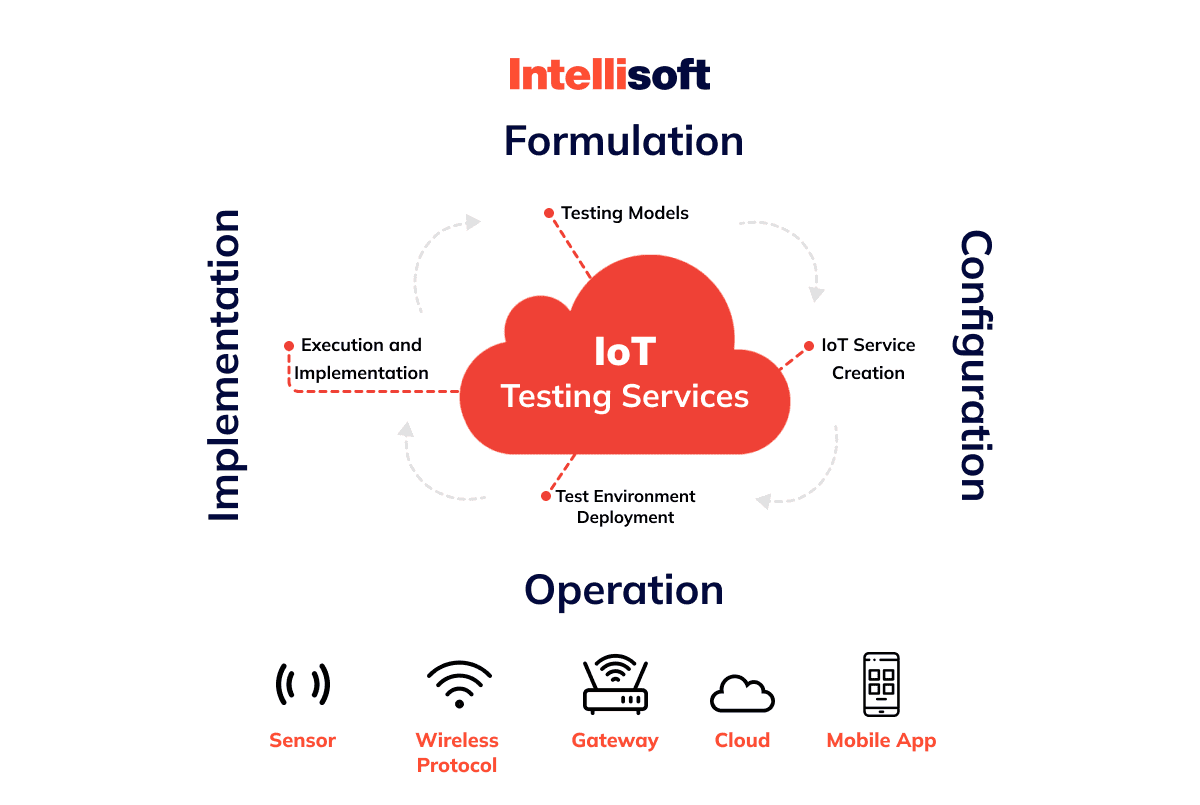
The testing procedure can change based on the kind of IoT system developed. Depending on the app’s needs, the development model may radically alter. However, some stages are common for all situations.
Requirement Analysis
Managers of QA should gather requirements from the Software Development Life Cycle (SDLC). This aids in the analysis of the requirements to determine their testability.
Typically, user stories are used to document these needs. Devices, interfaces, and connectivity are provided at this point for testing IoT devices.
Planning
The QA manager decides how often to collaborate between the development team and the QA team to ensure the proper collection of scenarios is prioritized to manage problems and conduct regression testing. It is all done based on the requirements analysis.
Plan to engage IoT specialists at this time, purchase testing equipment, and gain an understanding of the underlying app structure and other necessary testing-related components.
Design
The QA manager distributes test suite projects to testers after determining the necessity and importance of test scenarios. The tester then evaluates multiple scenarios, their importance, and their functionality.
Examiners build a test suite based on the program’s functionality, the performance of the device, connectivity, security, and other factors.
Environment Setting
Setting up the environment is essential because it involves several devices, especially when testing IoT devices. Typically, purchasing a device can be challenging due to the cost of such items. Most of the time, management tries to keep costs down. However, all the testing would be useless if you did not have exactly the devices used in the production environment.
Testing
It’s time to execute and use devices. Use a variety of scenarios to test the IoT system’s connectivity, functionality, security, and performance. Additionally, compile observation reports. A bug in the system should be reported to the development team.
Related readings:
- Cracking the Code: How to Write a Bug Report That Developers Love
- Docker and Microservices: The Future of Scalable and Resilient Application Development
- Making Sense of Databases: How to Choose the Right One
- Best Testing Automation Tools: Today’s Most Popular Solutions for Examining Apps
- Today’s World’s Most Popular Tools for Testing REST API
What Are the Available IoT Testing Tools?
What is the best IoT application testing tool? They all have pros and cons, depending on what you plan to examine.
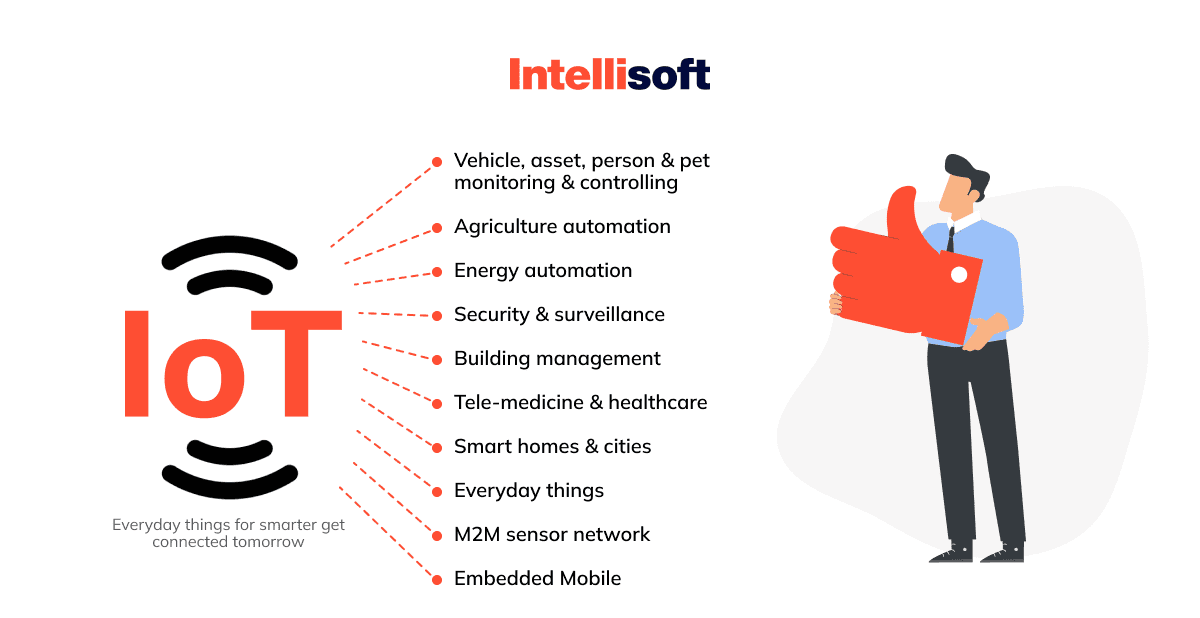
- Data loggers from various devices. The recorded data auto-plays on extra device endpoints, assisting in testing an app’s suitability for usage across a range of hardware and communication layers.
- Virtualization instruments. It’s difficult and time-consuming to test the behavior of an IoT program in real time. Furthermore, virtualization solutions enable the cost-effective and fast execution of compatibility testing without investing in multiple hardware, databases, platform services, etc.
- Recording and playback tools. To automate test execution, devices or software, systems, and user data/actions can be recorded and replayed on simulators and applications.
- Device or protocol simulators. They enable you to imitate standard-compliant devices and then modify them to display the precise states you want, which is why testers utilize them when there are significant discrepancies between device endpoints and their interfaces.
- API testing tools. Web services and REST APIs are being used more frequently to build solutions. Their connectivity, responsiveness, and performance are checked using tools like Postman, Progress®, and SoapUI.
- Auto-deployment instruments. They are used to rapidly deploy managed services, construct virtual machines on-premises or in the cloud programmatically, and configure and deploy custom-built services and applications. Staging capabilities are provided by tools like Foreman and Katello.
- Mobile testing suite. These tools offer fully automated mobile testing that validates the app’s functionality and mimics the end-user experience.
- Security testing kits. These instruments are classified into three categories: runtime threat generating, threat modeling, and static code analysis. Threats are identified, prioritized, and remedied using tools such as Microsoft® Threat Modeling Tool, OWASP ZAP, VGC, etc.
- Extras. The following are some tools and equipment that you may use to test IoT solutions: Wireshark® for network traffic monitoring, Fiddler for HTTP traffic debugging, etc.
Conclusion
Testing the Internet of Things devices is not a simple process, and it takes resources with the right skill set to perform testing. You must ensure that your test covers the apps and devices’ usability, security, performance, connectivity, and compatibility factors. Also, keep in mind that several approaches to checking IoT systems exist, so pick the ones based on your project needs and goals.
We at IntelliSoft can hire an IoT development team for you that would be able to change and adapt the forms of software testing used inside your projects. Our QA team can find your product’s flawlessly concealed issues. Therefore, we are here to help if your IT staff lacks the resources to test an existing IoT system or if you need to design and test a new IoT solution. Let us know what your project requires, and we’ll get back to you ASAP!


